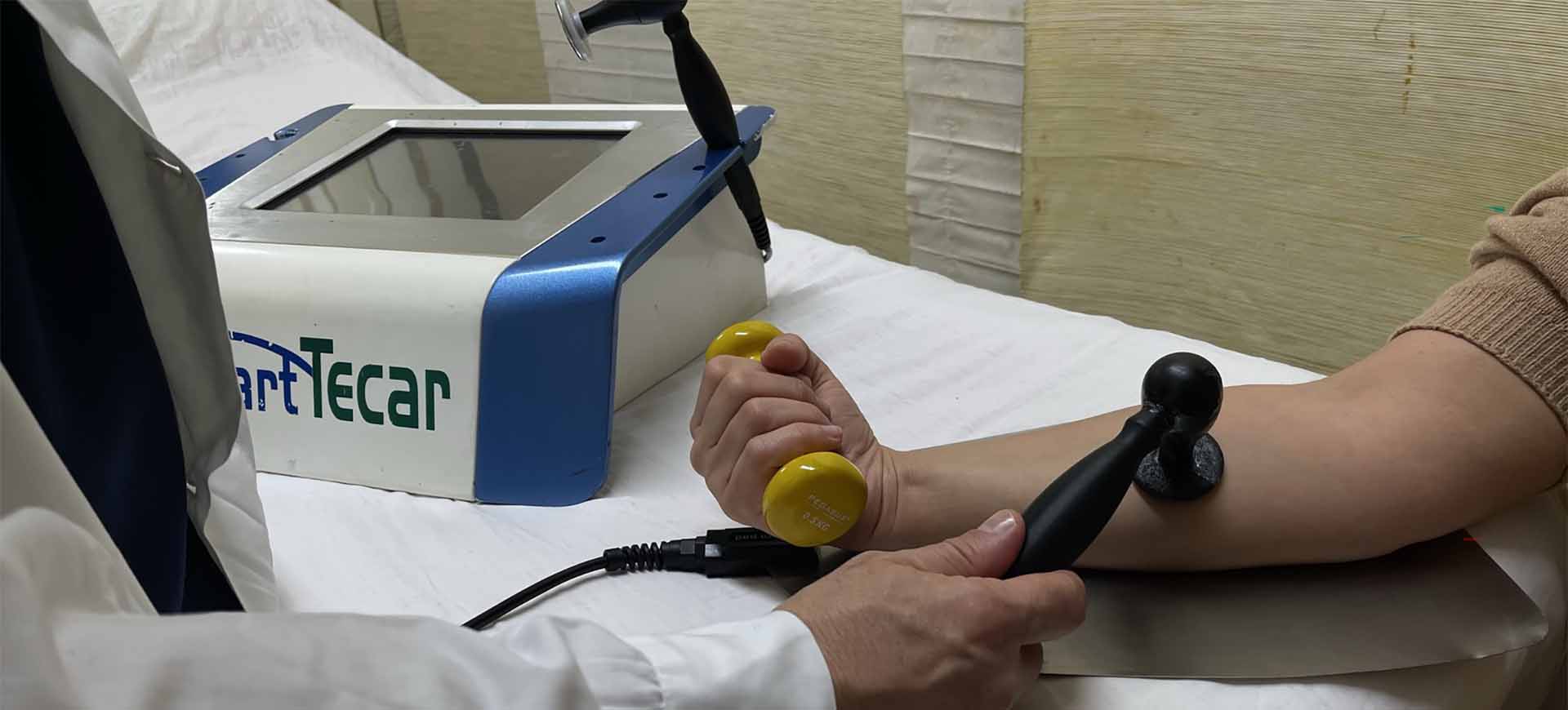What is TECAR?
TECAR (Transfer of Energy Capacitive and Resistive) therapy is a cutting-edge form of physical therapy that uses electromagnetic energy to promote healing and pain relief. This therapy works by applying energy to the affected area through the use of a handheld device. The energy is then transferred to the tissues, deeper than any other form of diathermy, stimulating the body's natural healing process.
How Does TECAR Help?
TECAR therapy has several benefits, including reducing pain, improving range of motion and increasing circulation. This therapy is particularly effective for treating musculoskeletal injuries such as sprains, strains and joint pain. It is also helpful in treating conditions such as arthritis and tendinopathy. Heating deep tissues alleviates pain and promotes cellular metabolism shortening the time of rehabilitation.
How is TECAR Applied?
The application of TECAR therapy is non-invasive and painless. During a treatment session, the therapist will apply the device to the affected area, allowing the electromagnetic energy to penetrate deep into the tissues. Combining functional movement and the application of TECAR, activates the body's natural healing process, promoting the repair of damaged tissues and reducing inflammation.
Is TECAR a Scientific Approach?
Research has shown that TECAR therapy can be an effective treatment option for a range of musculoskeletal injuries and conditions. Two published studies, one in the International Journal of Public Health and Health Systems and another in the Journal of Biological Regulators and Homeostatic Agenta, found that TECAR was effective in reducing the pain and improving functionality in patients with chronic low back pain.
References- Ribeiro S, Henriques B, Coardoso R. The Effectiveness of Tecar Therapy in Musculoskeletal Disorders.International Journal of Public Health and Health Systems 2018; 3(5): 77-83
- Notarnicola A, Maccagnano G, Gallone MF, Covelli I, Tafuri S, Moretti B. Short term efficacy of capacitive-resistive diathermy therapy in patients with low back pain: a prospective randomized controlled trial. J Biol Regul Homeost Agents. 2017;31(2):509-515.
- Duñabeitia I, Arrieta H, Torres-Unda J, et al. Effects of a capacitive-resistive electric transfer therapy on physiological and biomechanical parameters in recreational runners: A randomized controlled crossover trial. Phys Ther Sport. 2018;32:227-234. doi:10.1016/j.ptsp.2018.05.020
- Cau N, Cimolin V, Aspesi V, et al. Preliminary evidence of effectiveness of TECAR in lymphedema. Lymphology. 2019;52(1):35-43.
- Clijsen R, Leoni D, Schneebeli A, et al. Does the Application of Tecar Therapy Affect Temperature and Perfusion of Skin and Muscle Microcirculation? A Pilot Feasibility Study on Healthy Subjects. J Altern Complement Med. 2020;26(2):147-153. doi:10.1089/acm.2019.0165
In conclusion, TECAR therapy is a non-invasive and effective treatment option for musculoskeletal injuries and conditions. Its use can lead to reduced pain, improved range of motion, and increased circulation, promoting the body's natural healing process.
Contact our practician today to schedule your next appointment.


